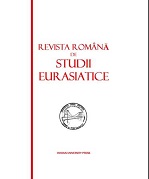THE PEACE OF BUCHAREST OF 1913: POLITICAL EFFECTS AND DEMOGRAPHIC REALITIES IN SOUTHERN DOBROGEA
THE PEACE OF BUCHAREST OF 1913: POLITICAL EFFECTS AND DEMOGRAPHIC REALITIES IN SOUTHERN DOBROGEA
Author(s): Enache TuşaSubject(s): History
Published by: Ovidius University Press
Keywords: colonized; populations; territory; political project; migrations. colonized; populations; territory; political project; migrations
Summary/Abstract: The present research studies the phenomenon of colonization and migration of populations that occurred in Dobrogea and the political and economic motivations that led to these processes. Term colonization not only send various forms of expansion of imperial powers outside its scope, but also how to install settlers generally less populated regions, but with good agricultural potential (as is the case Dobrogea) or raw materials and untapped resources; The earliest settling of the Macedo-Romanians in Greater Romania occurred between 1925 and 1926. In 1927, the number of Macedo-Romanian émigrés dropped to 88 families, all coming from the same localities, while in 1928 it rose to 656 families that arrived from Meglen and Horopani, Greece. They all settled in the Cadrilater (Southern Dobrogea), in the counties of Durostor and Caliacra. The Macedo-Romanians from Greece emigrated in great numbers to Romania in accordance with their elite’s national ideal, namely to rejoin the country to which they were regarded to belong.
Journal: Revista Română de Studii Eurasiatice
- Issue Year: 9/2013
- Issue No: 1+2
- Page Range: 43-52
- Page Count: 10
- Language: English

